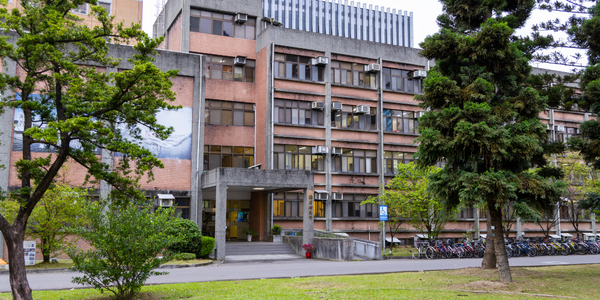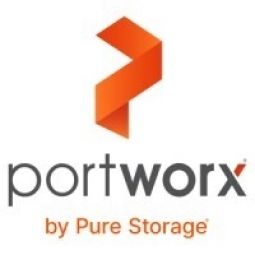技术
- 应用基础设施与中间件 - 数据库管理和存储
- 基础设施即服务 (IaaS) - 云存储服务
适用行业
- 建筑物
- 建筑与基础设施
适用功能
- 质量保证
用例
- 施工管理
- 智能包装
服务
- 云规划/设计/实施服务
- 软件设计与工程服务
关于客户
GE Digital 是通用电气 (GE) 的一个部门,为工业公司提供软件和咨询服务。该公司正在加利福尼亚州圣拉蒙建设世界一流、高度安全的工业物联网平台 Predix。 Predix旨在利用GE在航空、电力、交通、石油天然气和照明等领域的工业财富知识和领域专业知识,实现工业互联网的数字化。该平台的构建与云无关,并为平台即服务 (PaaS) 提供通用接口,其中包括 Cloud Foundry 和 Mesos。 GE Digital 的最终用户与其中一项或两项服务交互以使用 Predix,无论其部署在何处。
挑战
GE Digital 面临着在快速发展的容器技术生态系统中管理存储的挑战。该公司使用的是 Cloud Foundry,它对于无状态应用程序非常有效,但他们需要一个能够同时处理无状态和有状态应用程序的解决方案。他们正在寻找一种可以提供单一基础设施的解决方案,使他们能够运行无状态和有状态应用程序。他们还需要一种支持开箱即用的加密和快照的解决方案,这对于工业公司至关重要。我们面临的挑战是找到一种解决方案,该解决方案不仅能够满足这些要求,而且与云无关,并为 DevOps 团队提供统一的体验。
解决方案
GE Digital 与 Portworx 合作,解决其工业物联网平台 Predix 的状态需求。 Portworx 提供了一种云原生存储软件,专为通过 Kubernetes 或 DC/OS 等容器编排器部署的应用程序而设计。它提供了一个专门为现代应用程序构建的存储层,这些应用程序是面向服务的,打包为容器,并且旨在以分布式方式在云原生基础设施上运行。 Portworx 提供了一个抽象层,允许应用程序以编程方式指定所需的存储资源类型,而无需了解底层物理基础设施或公共云提供商。该解决方案使 GE Digital 能够提供一个高度可用的平台,并且可以在全球所有其他存在点(包括其他云提供商和本地)运行。
运营影响

Case Study missing?
Start adding your own!
Register with your work email and create a new case study profile for your business.
相关案例.

Case Study
Energy Saving & Power Monitoring System
Recently a university in Taiwan was experiencing dramatic power usage increases due to its growing number of campus buildings and students. Aiming to analyze their power consumption and increase their power efficiency across 52 buildings, the university wanted to build a power management system utilizing web-based hardware and software. With these goals in mind, they contacted Advantech to help them develop their system and provide them with the means to save energy in the years to come.

Case Study
IoT System for Tunnel Construction
The Zenitaka Corporation ('Zenitaka') has two major business areas: its architectural business focuses on structures such as government buildings, office buildings, and commercial facilities, while its civil engineering business is targeted at structures such as tunnels, bridges and dams. Within these areas, there presented two issues that have always persisted in regard to the construction of mountain tunnels. These issues are 'improving safety" and "reducing energy consumption". Mountain tunnels construction requires a massive amount of electricity. This is because there are many kinds of electrical equipment being used day and night, including construction machinery, construction lighting, and ventilating fan. Despite this, the amount of power consumption is generally not tightly managed. In many cases, the exact amount of power consumption is only ascertained when the bill from the power company becomes available. Sometimes, corporations install demand-monitoring equipment to help curb the maximum power demanded. However, even in these cases, the devices only allow the total volume of power consumption to be ascertained, or they may issue warnings to prevent the contracted volume of power from being exceeded. In order to tackle the issue of reducing power consumption, it was first necessary to obtain an accurate breakdown of how much power was being used in each particular area. In other words, we needed to be able to visualize the amount of power being consumed. Safety, was also not being managed very rigorously. Even now, tunnel construction sites often use a 'name label' system for managing entry into the work site. Specifically, red labels with white reverse sides that bear the workers' names on both sides are displayed at the tunnel work site entrance. The workers themselves then flip the name label to the appropriate side when entering or exiting from the work site to indicate whether or not they are working inside the tunnel at any given time. If a worker forgets to flip his or her name label when entering or exiting from the tunnel, management cannot be performed effectively. In order to tackle the challenges mentioned above, Zenitaka decided to build a system that could improve the safety of tunnel construction as well as reduce the amount of power consumed. In other words, this new system would facilitate a clear picture of which workers were working in each location at the mountain tunnel construction site, as well as which processes were being carried out at those respective locations at any given time. The system would maintain the safety of all workers while also carefully controlling the electrical equipment to reduce unnecessary power consumption. Having decided on the concept, our next concern was whether there existed any kind of robust hardware that would not break down at the construction work site, that could move freely in response to changes in the working environment, and that could accurately detect workers and vehicles using radio frequency identification (RFID). Given that this system would involve many components that were new to Zenitaka, we decided to enlist the cooperation of E.I.Sol Co., Ltd. ('E.I.Sol') as our joint development partner, as they had provided us with a highly practical proposal.

Case Study
Intelligent Building Automation System and Energy Saving Solution
One of the most difficult problems facing the world is conserving energy in buildings. However, it is not easy to have a cost-effective solution to reduce energy usage in a building. One solution for saving energy is to implement an intelligent building automation system (BAS) which can be controlled according to its schedule. In Indonesia a large university with a five floor building and 22 classrooms wanted to save the amount of energy being used.

Case Study
Powering Smart Home Automation solutions with IoT for Energy conservation
Many industry leaders that offer Smart Energy Management products & solutions face challenges including:How to build a scalable platform that can automatically scale-up to on-board ‘n’ number of Smart home devicesData security, solution availability, and reliability are the other critical factors to deal withHow to create a robust common IoT platform that handles any kind of smart devicesHow to enable data management capabilities that would help in intelligent decision-making

Case Study
Splunk Partnership Ties Together Big Data & IoT Services
Splunk was faced with the need to meet emerging customer demands for interfacing IoT projects to its suite of services. The company required an IoT partner that would be able to easily and quickly integrate with its Splunk Enterprise platform, rather than allocating development resources and time to building out an IoT interface and application platform.








